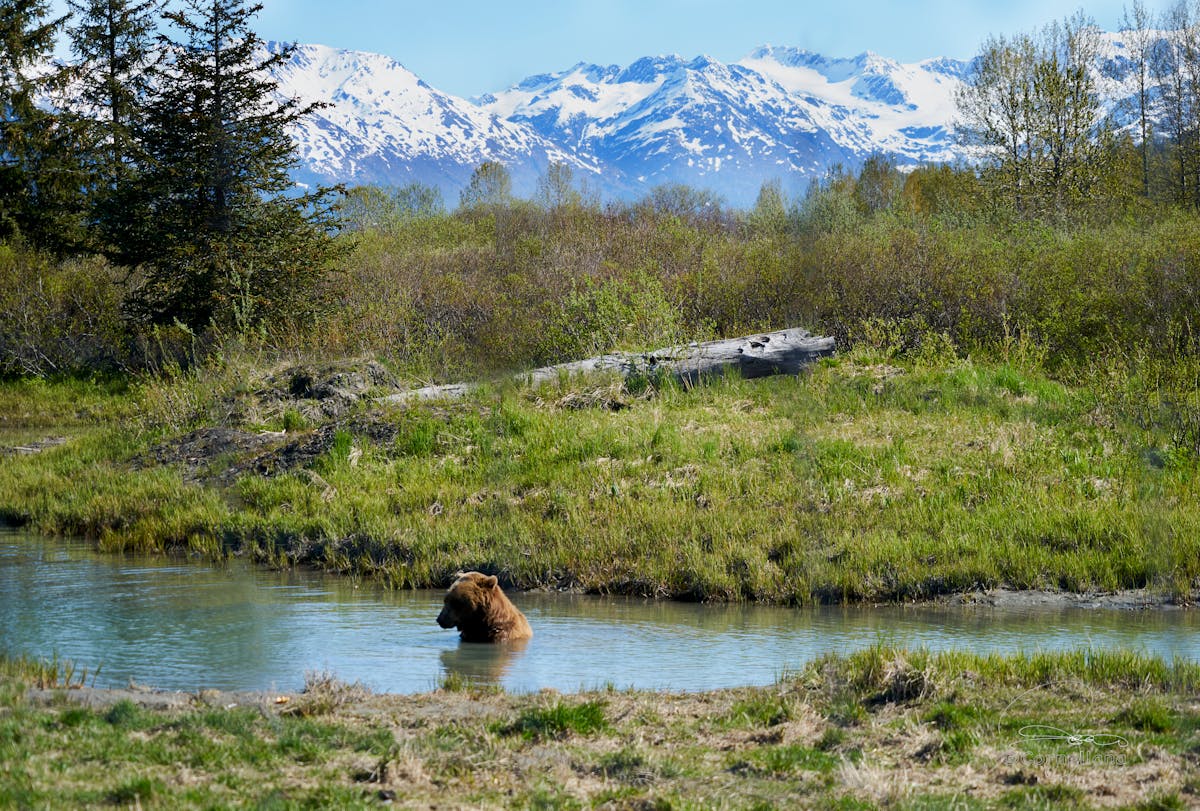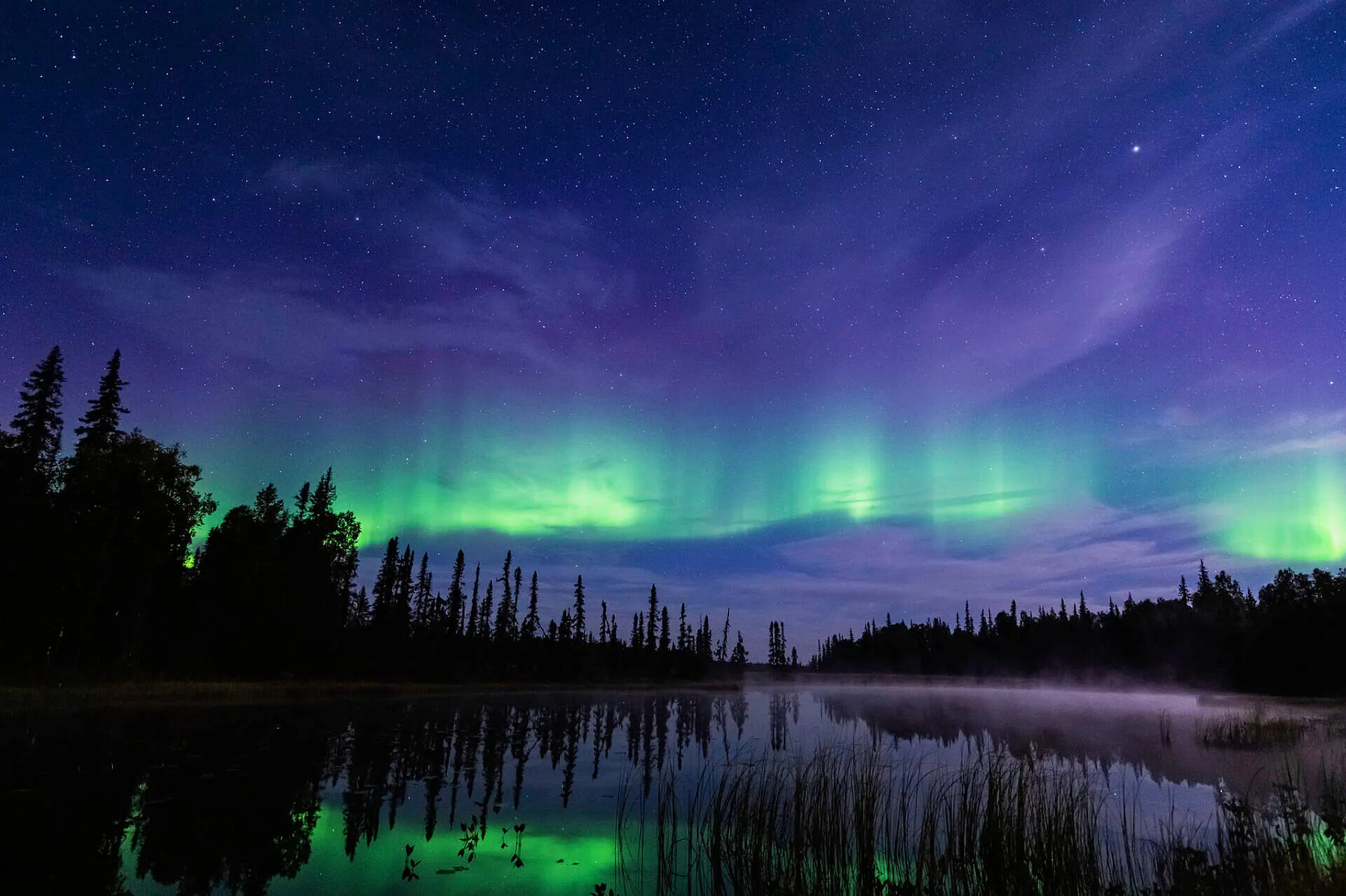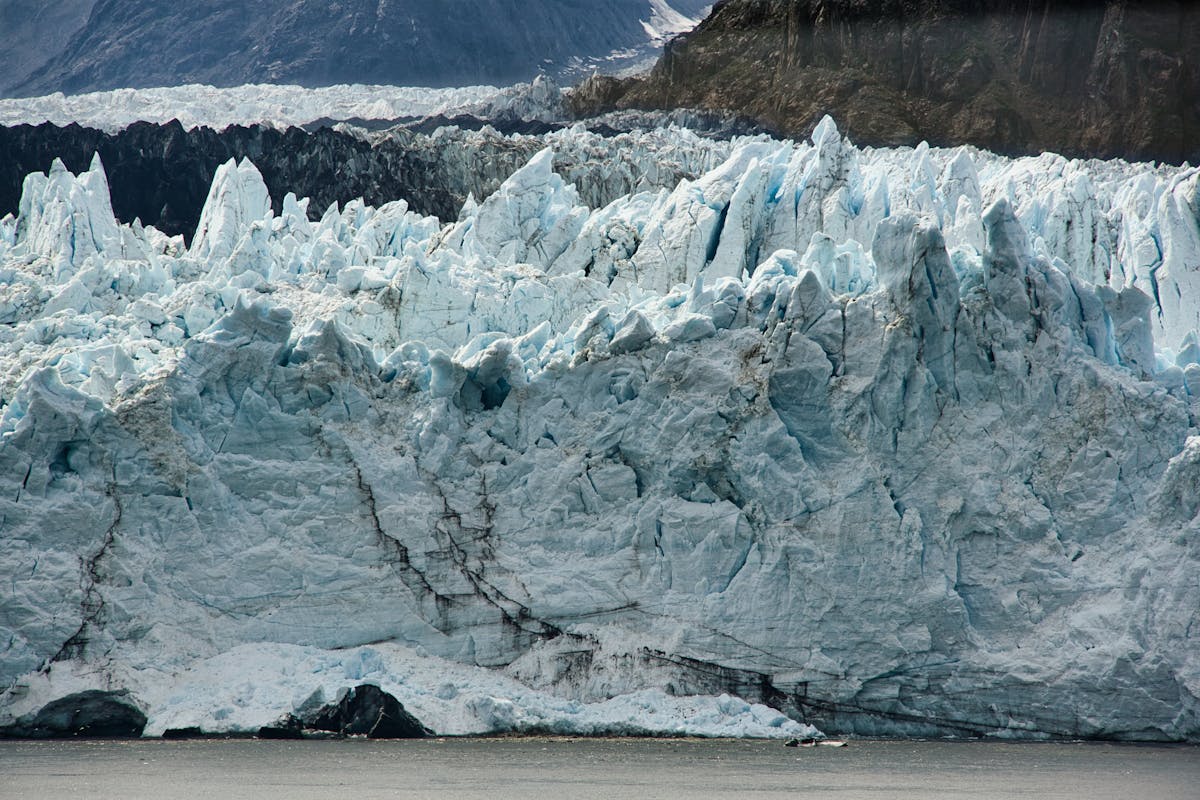The ethereal dance of the Aurora Borealis, or Northern Lights, is a bucket-list spectacle for travelers worldwide. While destinations like Norway, Canada, and Iceland often come to mind, Alaska stands out as a premier location for witnessing this celestial phenomenon. Its unique geography, dark skies, and accessibility from within the United States make it an unparalleled choice for aurora enthusiasts seeking an unforgettable experience.
Choosing Alaska for your aurora quest offers several distinct advantages. For travelers from the Lower 48, non-stop flights are available year-round from major hubs like Chicago, Denver, Los Angeles, Minneapolis, Seattle, and Portland, making the journey relatively quick and easy without the need for a passport. This convenience sets Alaska apart from many international aurora destinations.

Moreover, Alaska provides flexibility in timing. The aurora season typically runs from mid-August to mid-April. Visiting from mid-November through March offers prime viewing during the long, dark winter nights, often combined with classic Alaskan winter activities like ice fishing or dogsledding. However, the shoulder seasons (mid-August to mid-September and March-April) allow for aurora viewing alongside late summer or early spring activities, such as exploring national parks or taking glacier cruises, adding another layer to your trip.
Perhaps most compelling are the incredible odds. Travelers who dedicate at least three nights to actively seeking the lights in and around Fairbanks boast a remarkable 90% chance of witnessing a display. While no natural phenomenon can be absolutely guaranteed due to factors like cloud cover or solar activity levels, Alaska provides one of the highest probabilities for success, especially when planning allows for multiple nights of viewing.
Maximizing Your Chances of Seeing the Lights
While Alaska offers fantastic opportunities, preparation and strategy significantly enhance your likelihood of seeing the aurora. Simply showing up hoping for the best isn’t the most effective approach. Instead, informed planning centered around timing and location is key to a successful aurora hunt.
Dedicate a minimum of 3-5 nights to your trip, preferably 5-7 days if your schedule allows. The more nights you are out looking under dark skies, the higher your cumulative probability becomes, reaching that impressive 90% figure with a 3-night dedicated effort near Fairbanks. This allows buffer time for weather patterns or variations in solar activity.
Going to the right location is paramount. The Aurora Borealis activity is strongest within a region known as the “Auroral Oval,” a band circling the magnetic pole. Positioning yourself directly under or near this oval during peak activity hours significantly increases your chances of seeing vibrant displays directly overhead. Alaska is ideally situated relative to this dynamic oval.
Understanding the Auroral Oval
The Auroral Oval’s position shifts slightly with solar activity, but cities like Fairbanks are consistently located just below its average southern edge. This positioning means that even moderate solar activity can produce visible auroras, often directly overhead from a dark location. Further north might mean you’re within the oval, offering views in different directions, while locations further south are more reliant on stronger solar storms for the oval to expand enough to reach them.
The Best Places To See Northern Lights In Alaska
Identifying the single “best” place depends on your travel style, budget, and tolerance for cold and remoteness. However, certain locations consistently offer superior viewing opportunities due to their latitude, clear skies, and infrastructure. Focusing your trip around these areas provides the highest probability of experiencing the magic.
Fairbanks: The Aurora Capital
Fairbanks proudly holds the title of the “Aurora Capital of the World” for good reason. Situated directly under the Auroral Oval, it benefits from consistently clear skies and minimal light pollution compared to larger southern cities. The combination of these factors makes it the most reliable location in Alaska for viewing the Northern Lights.
The Fairbanks area offers numerous excellent viewing spots. You can drive to accessible hilltop viewpoints away from city lights, book a tour to a remote cabin with large windows or open fields, or even stay at dedicated aurora lodges designed for comfort while waiting for the show. The city also boasts a strong tourism infrastructure catering specifically to aurora hunters, including transportation, guides, and warm shelters.
Anchorage and Southcentral Alaska
While Fairbanks offers the highest probability, don’t discount Southcentral Alaska, including the Anchorage area, the Mat-Su Valley, and the Kenai Peninsula. Auroral displays are frequent here, although perhaps not with the same nightly consistency as Fairbanks. Successful viewing in Southcentral often requires driving away from the significant light pollution of Anchorage.
Areas north and east of Anchorage, such as the Mat-Su Valley towards Palmer or Talkeetna, offer darker skies within a reasonable driving distance. Viewing opportunities are often better during the shoulder seasons (August-September and March-April) when nights are slightly longer in this region compared to further north. Seeing a strong display here against the backdrop of mountains or water can be incredibly dramatic.
 Aurora borealis over a lake in Alaska with mountains in the background.
Aurora borealis over a lake in Alaska with mountains in the background.
Remote Lodges & Wilderness
For the most immersive and darkest sky experience, consider staying at remote lodges or venturing into the wilderness areas away from any towns. Locations near or within Denali National Park (though access is limited in winter) or specialized lodges found across the state’s interior offer unparalleled darkness, allowing fainter auroras to be seen and stronger displays to appear incredibly vivid.

These options often involve package deals that include lodging, meals, transportation, and sometimes guided viewing sessions or photography workshops. While potentially more expensive and requiring more planning, the experience of seeing the aurora far from civilization is truly magical and offers an exceptional chance for stunning photographs.
Planning Your Trip: Essential Tips
Seeing the Northern Lights involves more than just being in the right place; thoughtful preparation enhances the entire experience and increases your comfort and chances of success. Consider these key tips when planning your Alaskan aurora adventure.
When to Go
As mentioned, the season is roughly mid-August to mid-April. For the longest nights and coldest, potentially clearest weather, winter (December-February) is prime. For slightly warmer temperatures, less snow, and the possibility of combining aurora with other seasonal activities (hiking, fall colors, spring skiing), the shoulder months (August-September, March-April) are excellent choices.
What to Pack
Alaska’s temperatures during aurora season can range dramatically, from mild autumn nights to extreme subzero winter cold. Layering is absolutely crucial. Pack thermal base layers, insulating mid-layers (fleece, down), a windproof and waterproof outer layer (jacket and pants), warm hats, gloves (mittens are warmer), and insulated, waterproof boots. Hand and foot warmers are also highly recommended for long nights outside.
Checking the Forecast
Stay informed about both the weather forecast (clear skies are essential) and the aurora forecast. Resources like the University of Alaska Fairbanks Geophysical Institute provide valuable forecasts of geomagnetic activity (Kp-index) and predicted aurora visibility. While not perfect, these forecasts can help you plan which nights to prioritize for viewing.
Discover the Best – Where to Go on Vacation in Florida
Your Ultimate Guide – what to eat in destin florida
Discover Fun Things to Do in LA Today
Consider Tours and Lodges
Especially if you’re unfamiliar with driving on ice/snow or navigating remote areas at night, guided tours or stays at dedicated lodges are highly beneficial. Tours provide transportation to optimal dark sky locations, often with experienced guides who understand aurora patterns and local conditions. Lodges offer warmth, comfort, and sometimes wake-up calls if the aurora appears during the night.
Beyond the Lights: Daytime Activities
An aurora trip isn’t just about the night. Fill your daylight hours with classic Alaskan experiences. In winter, try dogsledding, ice fishing, snowshoeing, or visiting local museums and cultural centers. During the shoulder seasons, hiking in national parks like Denali, taking scenic drives, wildlife viewing, or exploring local towns add richness to your journey, making your trip complete even if the aurora is shy on one particular night.
Frequently Asked Questions
What is the best time of year to see the Northern Lights in Alaska?
The best time is generally during the darkest months, from December to February, for the longest nights. However, clear skies are crucial, and the shoulder seasons (Aug-Sep, Mar-Apr) also offer good viewing opportunities with potentially milder weather.
How long should I stay in Alaska to see the aurora?
To maximize your chances, it’s recommended to stay at least 3-5 nights. A 5-7 night trip provides the best probability and allows flexibility for weather.
Can I see the Northern Lights from Anchorage city?
Seeing a vibrant display directly from within Anchorage is challenging due to significant light pollution. You will need to travel a short distance away from the city lights, typically north or east, to find sufficiently dark skies.
Is seeing the aurora guaranteed?
No, seeing the Northern Lights is a natural phenomenon dependent on clear skies and sufficient solar activity. However, staying for multiple nights in a prime location like Fairbanks significantly increases your chances.
What else can I do in Alaska during the aurora season?
Plenty! Depending on the time of year, you can enjoy winter sports like dogsledding, ice fishing, or skiing, explore museums, visit wildlife parks, take scenic flights, or go hiking during the shoulder seasons.
Conclusion
Experiencing the Northern Lights in Alaska is an awe-inspiring journey that connects you deeply with the raw beauty of the natural world. By choosing prime locations like Fairbanks, considering the potential of Southcentral Alaska’s dark sky areas, or venturing to remote wilderness lodges, and by planning your trip with essential tips on timing, packing, and local resources, you dramatically increase your likelihood of witnessing this incredible display. Alaska offers not just a chance to see the aurora, but to immerse yourself in a unique landscape and culture that makes the wait and the experience all the more rewarding.
